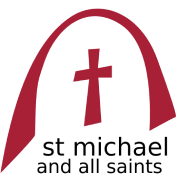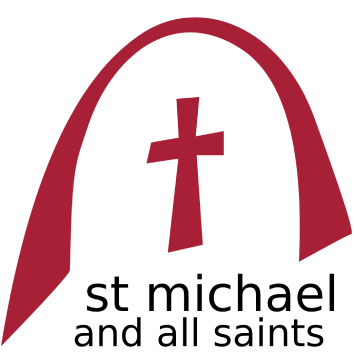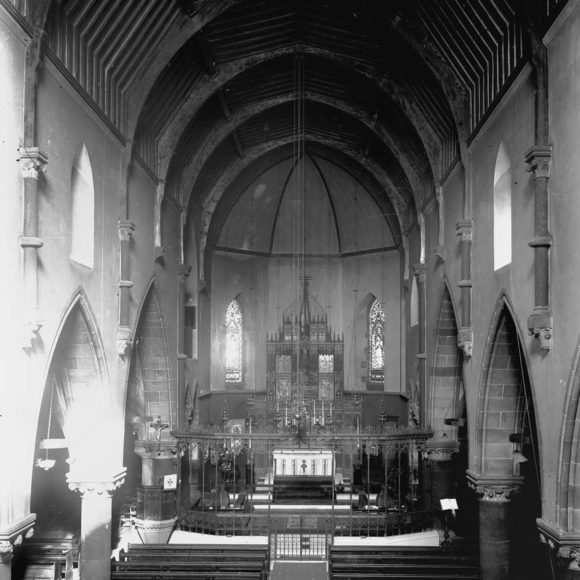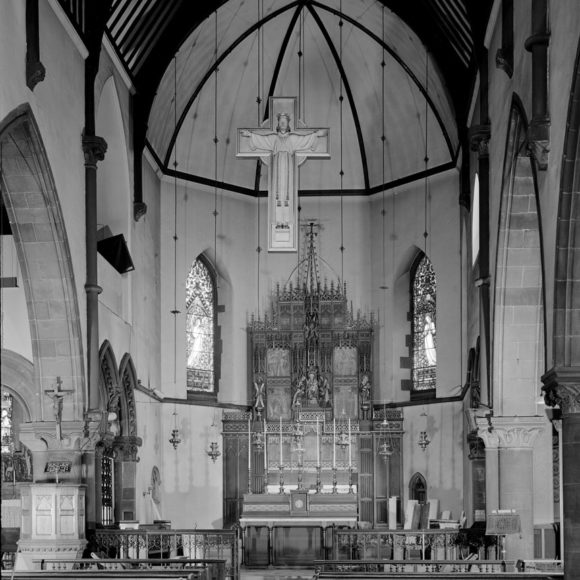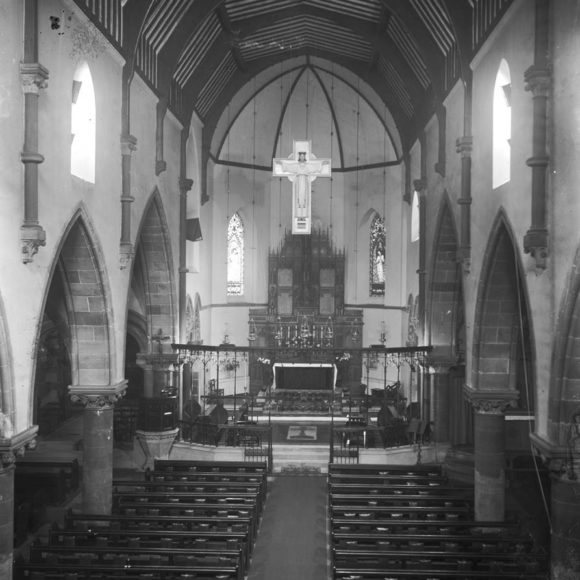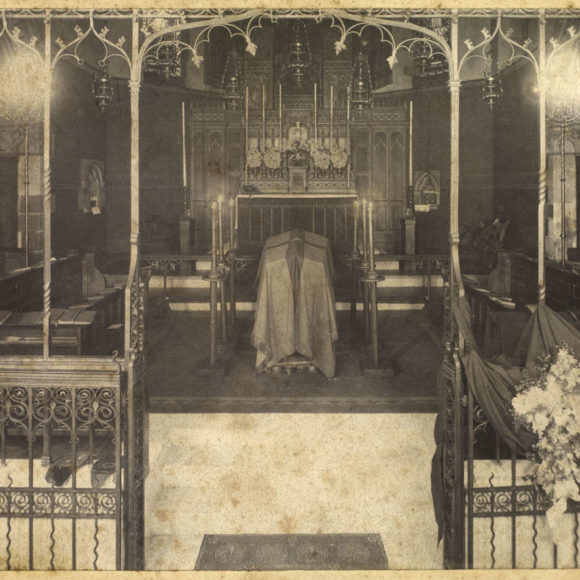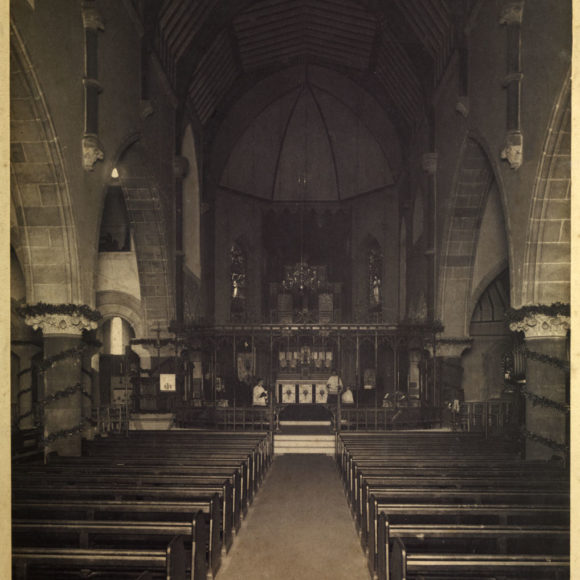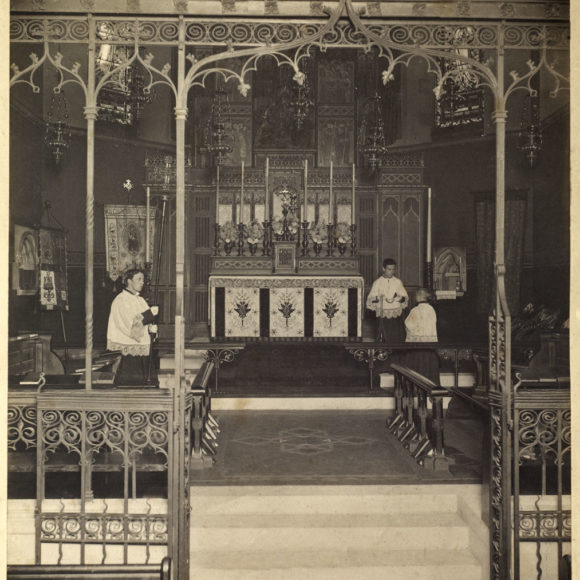History
A congregation rooted in mission and outreach
Our history is the history of two separate congregations – All Saints’ Church, Tollcross and St Michael’s Church, Hill Square – which, although connected in their early days, went their own ways, but came together again to form one congregation in one church building in 1965, as St Michael & All Saints’ Church. Both churches have their origins in mission and outreach.
This page is designed to complement the building-specific information available here.
All Saints’ Church
The All Saints’ congregation was first formed in 1853, when St John’s Church, Princes Street, established a mission school in Earl Grey Street, on the site of the present Central Hall, and used part of that school building for worship on Sundays. The mission served the inhabitants of what was then the slum area of Portsburgh. It was soon found that a proper church was required for this congregation.
The present church was begun in 1866 to a design by R. Rowand Anderson (later responsible for the Scottish National Portrait Gallery and the McEwan Hall in Edinburgh) and opened the next year. What was built in this first phase consisted of the present nave and aisles, the transepts, chancel and what is now the St Michael’s Chapel on the south of the chancel. A large steeple was intended to be built at the south west corner, but not begun because of lack of money, and the west end of the church was finished in a rather temporary fashion. The next decade, the west end was finished to a new design (again by Anderson) with the addition of the narthex with a west gallery above. Running out of money, instead of a steeple the south west turret was built, which contains the stair to the gallery and, at the top, the church bell. Just before 1900, the church was extended by the construction of the Lady Chapel with an organ loft above the north side of the chancel. Anderson was yet again the architect but here he worked in Romanesque style rather than in the early Gothic of the rest of the church.
Historical links with religious societies
There are a number of religious societies that are connected with All Saints’. In 1870, at the request of Father Murdoch, the Society of All Saints’ (Sisters of the Poor) sent four sisters from Margaret Street, London, to work at All Saints’ Church. They acquired a permanent Mission House in Glen Street in 1875 and worked there and at St Martin’s, Edinburgh, until the 1930s.
The Community of St Andrew of Scotland was the only Religious Community founded entirely under the auspices of the Scottish Episcopal Church. It was founded by a Mrs Mackenzie, who died in 1904 and who was a member of All Saints’ Church. In 1858, she had opened a refuge for girls in Gilmore Place, which later moved to Greenside House, where it remained for many years: the Sisterhood of St Andrew of Scotland was formed later in 1865. In the same year, the Mother Superior also established the St Andrew’s Home Mission. It had as its base the Mission Chapel (House of Mercy) in Old High School Yards, Infirmary Street. It is this chapel which became St Michael’s Church in 1882. The Community expanded in 1885, opening a Rescue Preventive Home for girls and women at Joppa, which they ran until 1919.
In 1919, the Sisters of The Community of St Peter the Apostle, Westminster, originally from Laleham Abbey, took over the running of St Andrew’s Home in Joppa. A Chapel was built and consecrated in 1927, and St Andrew’s Home was finally closed in 1953. In 1932, this same Community took over All Saints’ House in Glen Street and carried on Mission work at All Saints for many years.
St Michael’s Church
The origins of this congregation are in the Home Mission, started by the Community of St Andrew, and their Mission Chapel. In 1881, the Mission Chapel obtained a constitution, and the Charge was renamed St Michael’s in 1882. The Charge had to wait six years before it was able to purchase a church in Hill Square from the Free Church of Scotland and dedicate it to St Michael.
For nearly a century, both churches continued their own courses, connected only through the religious orders associated with them. In 1965, the decision was taken to close St Michael’s, Hill Square, and, after some discussion as to what should happen to the congregation, the furniture and the church’s money, it was amalgamated with All Saints’ Church, Tollcross.
St Michael & All Saints’ Church
This union of two congregations provided the church building with its present unusual – and, as far as we can ascertain, unique – dedication to St Michael & All Saints’. Since that time, the church has remained structurally the same, although there have been some changes to the internal fittings, with some of the fixtures from St Michael’s replacing those in All Saints’.
The current incumbent of St Michael & All Saints’ Church, from 2014, is Father Martin Robson. We would be happy to provide further information on previous incumbents, please get in touch.
Many interesting features of the church can be seen in our printable church tour brochure, available here.
